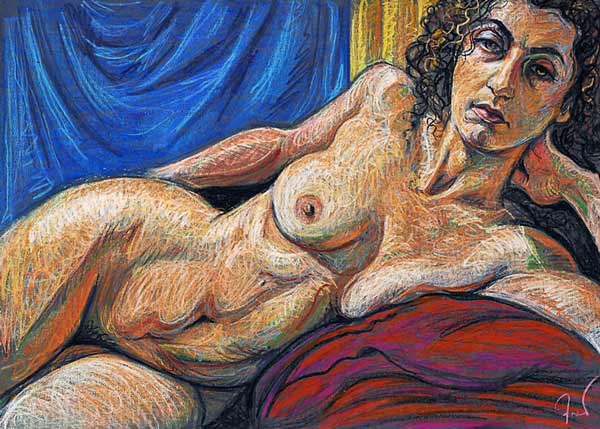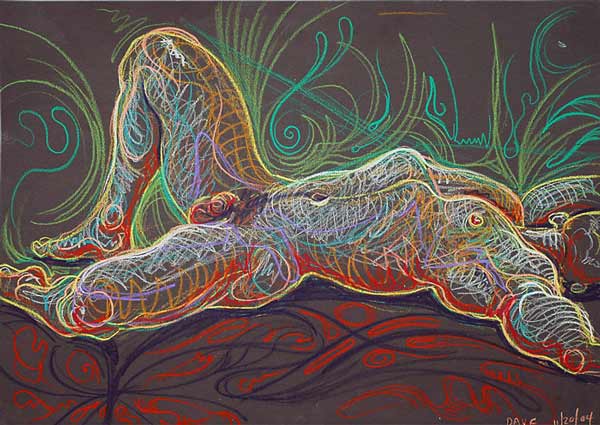Fred Hatt, energetic life drawings in riotous color

Nude Portraits
As a self-taught artist following a regular practice of life drawing, I am temperamentally drawn more to the quick poses than the long ones. But years ago Minerva Durham, the proprietor of Spring Studio, New York’s famous life drawing center, asked me to serve as monitor for a weekly three-hour long pose session. This challenged me to find levels of development that could sustain a longer focus: seeing subtleties of color and shadow, merging spontaneity and precision, and so on.
One of the great challenges is to make a figure drawing that is also a portrait. These are usually considered two separate artistic genres. Face recognition and body perceptions are even handled by different areas of the brain.

This may also reflect a cultural separation of mind and body that is prevalent in human culture. Religious attitudes may see the mind as angelic and the body as demonic, and imagine heaven as disembodied bliss. Scientific attitudes may see the perishable body as the curse of sublime mind, and imagine the salvation of humankind in artificial intelligence or in moving off the earth into space. In either case, the body is associated with earth, and both body and earth are rejected as impure. The mind/body disjunction is thus related to humanity’s alienation from nature, and realizing the wholeness of mind and body is about rediscovering our earthlyness.
In nude portraits, the face and body are depicted equally and together. Both the face and the body show aspects of the person like personality, attitude, and the effects of life experience. When they are shown and perceived together, with the body not concealed in clothing, the illusion of separateness is broken.

Energy Body Sketches
Let’s try to go beyond perceiving the body as simply an object, and see if we can capture something of the elusive life force. That force manifests through form and shape, but also through movement, attitude, gesture, the way a person approaches others and occupies space and time.
A photograph simply records light and form, but a drawing records the movement of perception through time. Every stroke reflects a moment of perception and expresses a certain energy arising from the interaction of artist, model and environment. Something fleeting becomes concrete in the image.
Fred Hatt
Nov 12, 2014
